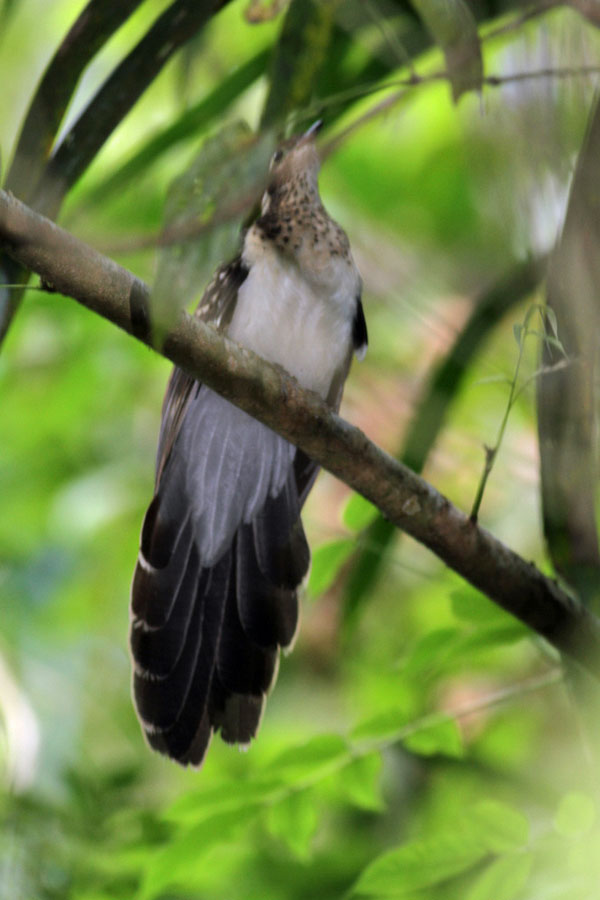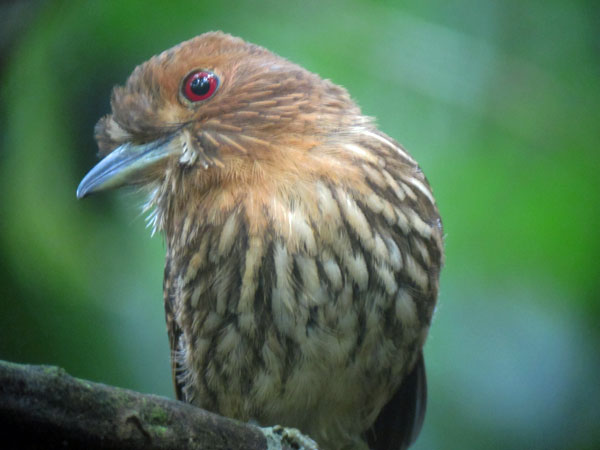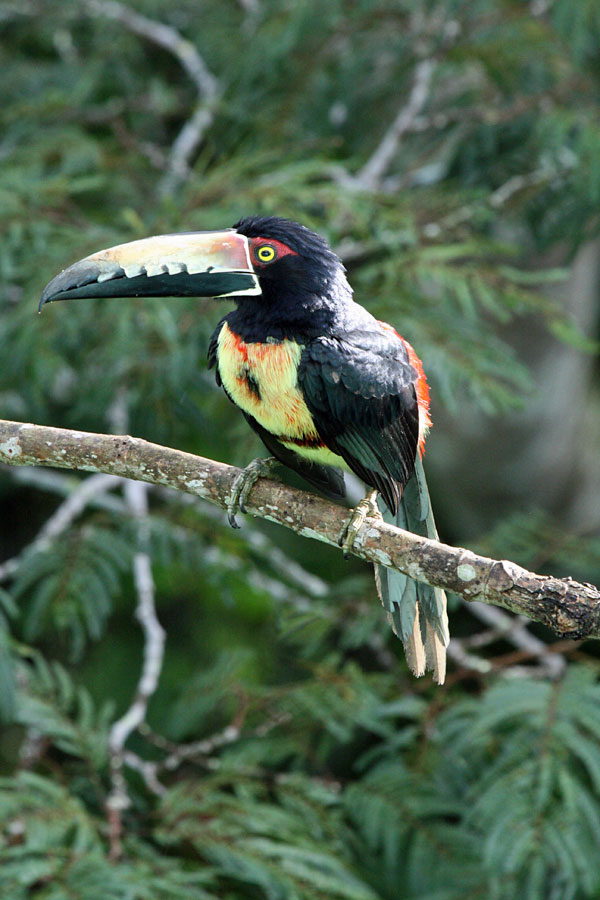From the Field
May 25: Jon Dunn on his just completed tour Migration in the Midwest: Crane Creek, Point Pelee and Tawas Point
What can one say about a trip that recorded every species of eastern neotropical landbird migrant except Connecticut Warbler, and that was heard twice if only by me. We saw 37 species of eastern wood warbler with outstanding views of nearly all species including Swainson’s, Mourning and Kirtland’s, the later both as migrants at MaGee and Tawas Point as well as on the breeding grounds. Other highlights included outstanding views of American Woodcock both in display flight and at MaGee where three youngsters were being led by a parent through the wet woods, and great views of both Chuck-will’s-widow and Eastern Whip-poor-will, the latter both at roost and while sitting on a stump singing. A mixed flock of Plegadis ibis at Ottawa National Wildlife Refuge, included both White-faced and Glossy, plus a hybrid. We recorded most of the expected shorebirds, plus three American Golden-Plovers near Point Pelee (a bit late) and a territorial pair of Piping Plovers at Tawas Point; this species has nested here in the past, but has been largely absent over the last decade or so. Kirtland's Warbler, Acadian Flycatcher and Philadelphia Vireo are depicted below.
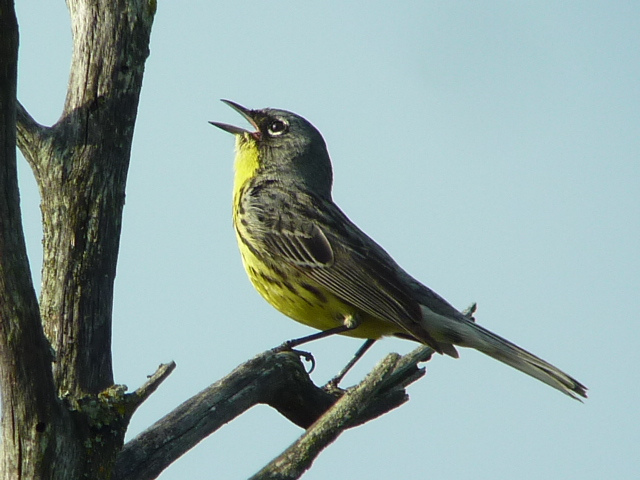
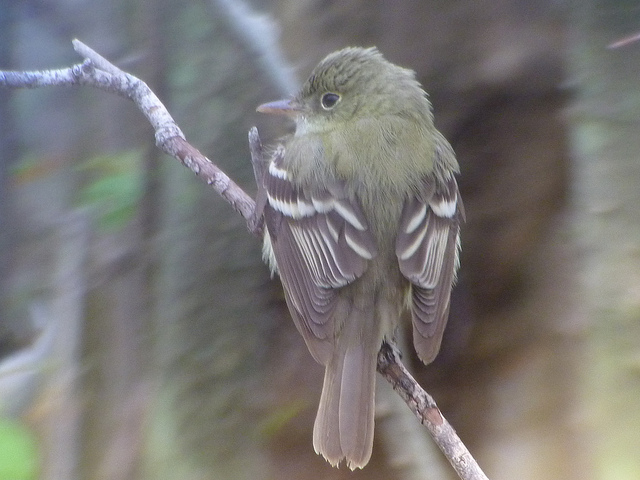
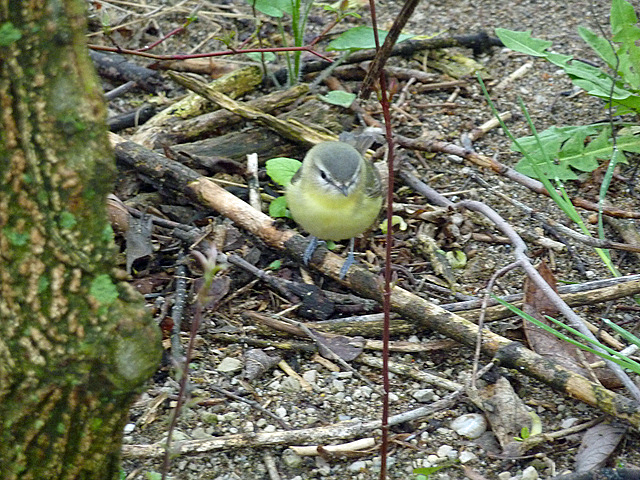
May 17: Gavin Bieber on his just-completed Arizona tour
Just wrapped up our annual Arizona Owls and Warblers tour. The spring of 2012 combined an earlier than normal warm up and a lack of winter rains resulting in a relatively quiet migration season and an early breeding by our resident birds...but this is southeastern Arizona where success is all but assured. Ranging from cottonwood willow riparian strips to Sonoran Desert, and from Madrean Pine-oak Woodland to petran Conifer Forest, we tallyied an amazing 8 species of owls, and 209 species overall. As always hummingbirds were a favored group, and we were treated to close views of 9 species including Violet-crowned and Broad-tailed (below). Other highlights included multiple tropical and gaudy Elegant Trogons, 17 species of flycatchers and a wealth of mammals including this cooperative Coyote, and three write-in species! Oh, and I suppose I should also comment on the gorgeous Red-faced, Olive, Grace's, Townsend's, Hermit and Black-throated Gray Warblers and such scarce species as Common Black-Hawk and Least Grebe (below). Although many prominent birding hotspots have been affected by the recent fires, significant areas of good forest remain on the slopes and the birding is still spectacular.
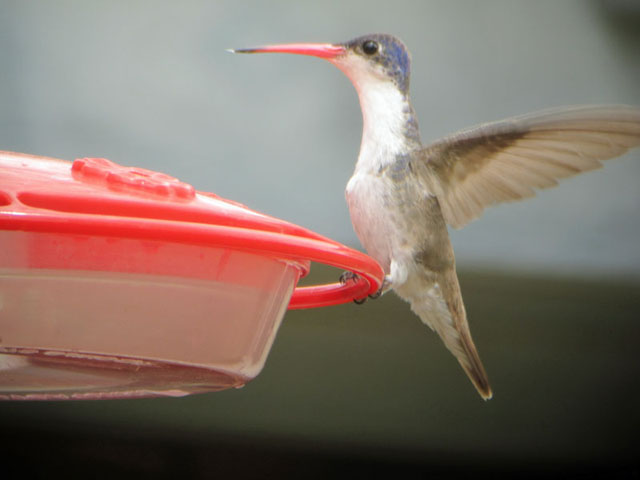
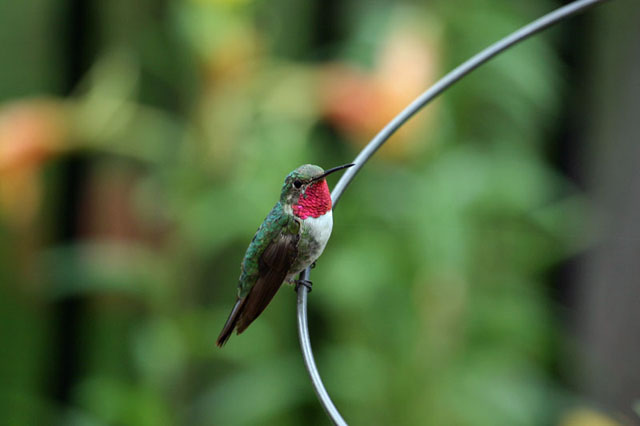
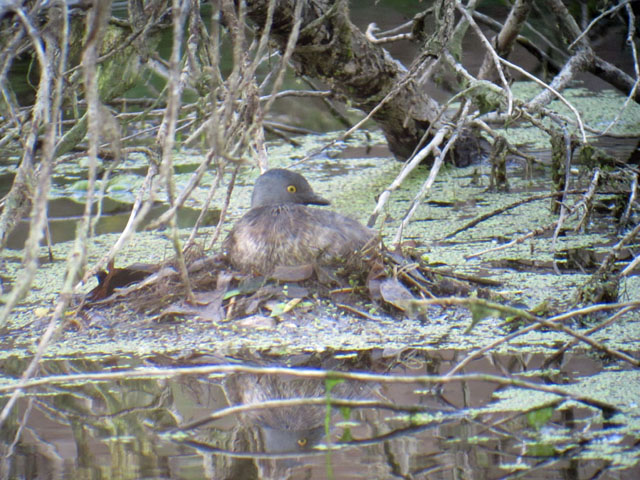
April 24: James Lidster on his just-concluded tours to Morocco
I am just home after two amazing tours to Morocco, both very similar and yet still quite different! On both trips we recorded many of the hoped for species including Northern Bald Ibis, Moussier's Redstart, Tristram's, African Desert & Scrub Warblers, Levaillant's Woodpecker, Seebohm's, Red-rumped and White-crowned Wheatears, Black-bellied and Spotted Sandgrouse, Pharaoh Eagle Owl, Cream-coloured Courser, African Crimson-winged Finch, Egyptian Nightjar, Thick-billed, Hoopoe and Temminck's Larks, plus all the exciting 'new' species (or species in waiting). The latter included Moroccan Wagtail, Maghreb Magpie, Ultramarine Tit, Atlas Chaffinch, Desert Grey Shrike and Atlas Horned Lark. There were other constants as well from the healthy picnics of sardines, fresh vegetables and local bread, mint tea and tastey tajines to the stunning scenery and friendliness of everyone we met.
So what was different between the two tours? The weather for one. The first trip saw some wet days, some windy days ending with some pleasantly sunny days along the coast. Snow was limited in the Atlas and there was no lake in the Sahara....roll on 2 weeks and there is still no snow in the Atlas, but a lake several miles long in the Sahara!! The day after our arrival in the Atlas we then had 40cm of fresh snow fall, providing some quite dramatic scenery....or rather making already dramatic scenery even more beautiful!
Where one tour missed out, eg no Maghreb Wheatear on the first tour, but they did see Crowned Sandgrouse. In fact, of all the hoped for species those 2 were the only ones that were only recorded on one of the tours.
Migration differed between the two trip of course, the first trip finding some nice surprises in the form of a male Pallid Harrier, several Isabelline Wheatears and a small group of Little Crakes. The second trip was rewarded with a few of the later migrants such as European Roller, Golden Oriole, Rufous Bush-robin and even larger numbers of European Bee-eaters.
Could I choose between which tour was the best, no chance! Morocco remains a top class birding destination.....the only downside, I wish I was going back for a 3rd trip!
PS: The following gallery of images from both tour shows, in order of appearance: African Crimson-winged Finch, Black-bellied Sandgrouse, Cream-coloured Courser, Egyptian Nightjar, European Bee-eater, a Saharan lake, the snowy Atlas Mountains, Temminck's Lark and Thick-billed Lark.
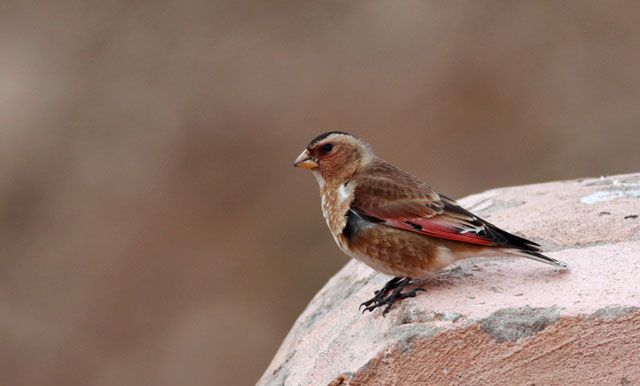
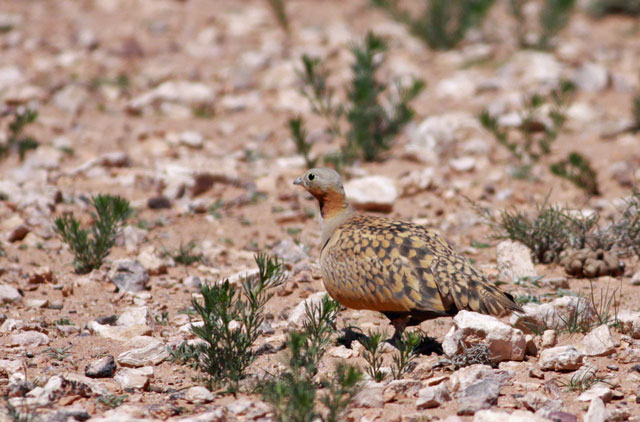
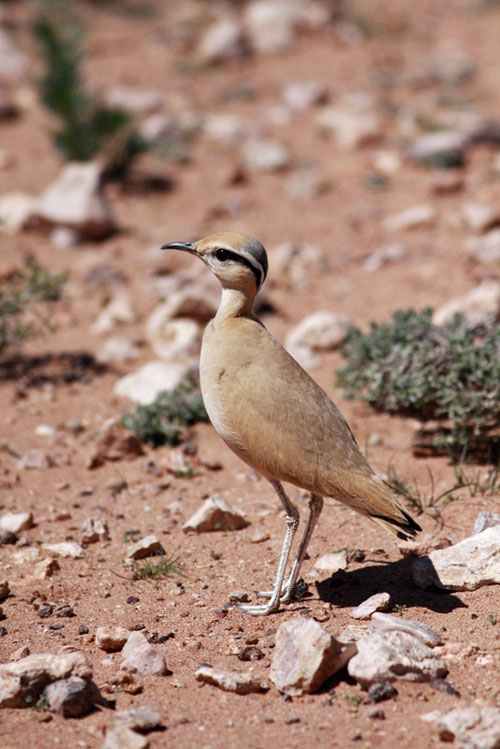
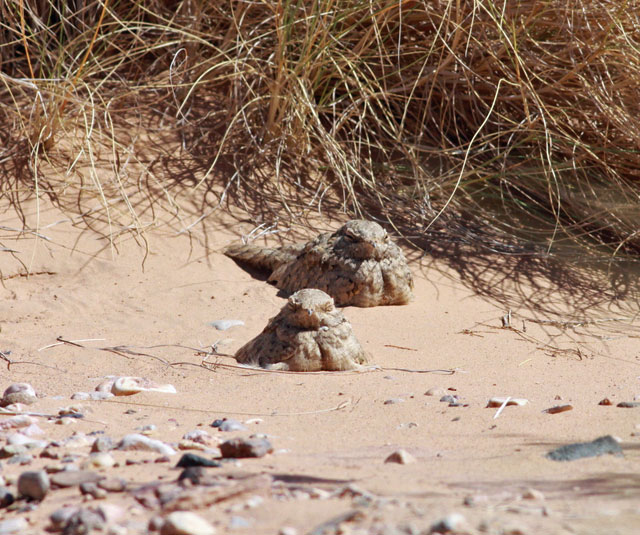
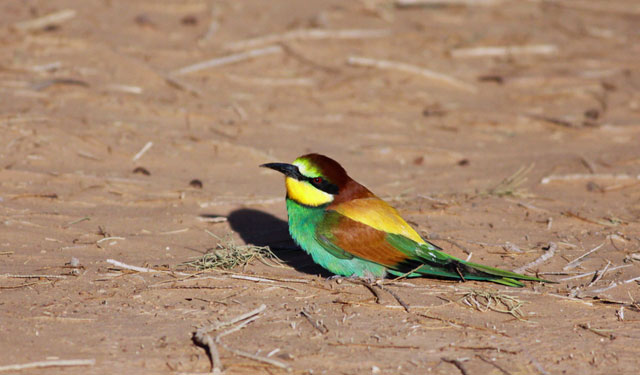
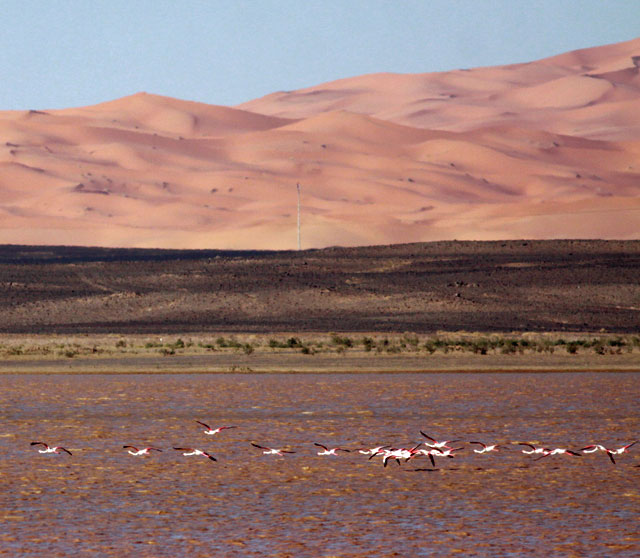

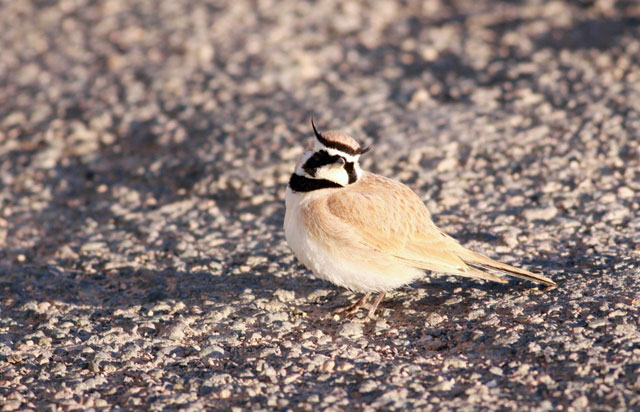
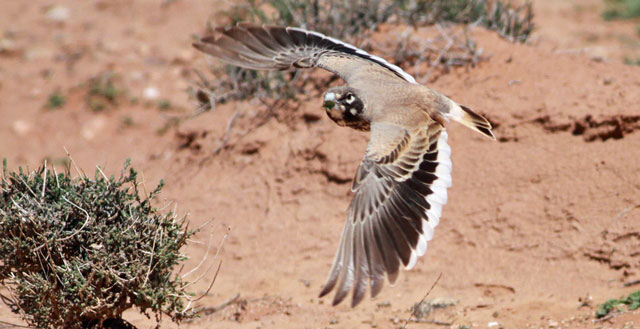
April 22: Steve Rooke from his ongoing tour to Georgia
We have just enjoyed an excellent morning, birding in the dramatic setting of the Terek River valley (below), dominated by the the impressive Kazbegi peak (below).
At this time of year species like the Great Rosefinch and Guldenstadt's Redstart which breed on the very tops, can sometimes still be found in the valley bottom where they winter. Walking up behind the hotel we soon saw 3 large passerines flying down from the snowy tops, they circled above us and dropped down right in front of us on some bushes - 1 fine male and 2 females Great Rosefinches which just sat their to be admired (and photographed, see below)). We were dragged away from them by shouts of 'Snowcock' and before long were watching a group of these large game birds walking over a snow field, displaying, calling and in flight. A group of Caucasian Black Grouse nearby also got in on the act with their strange 'leaping-lek'. This is only our second day - and we had found 15 Guldenstadt's Redstarts (below) on the first day, along with some excellent raptor passage through the valley.
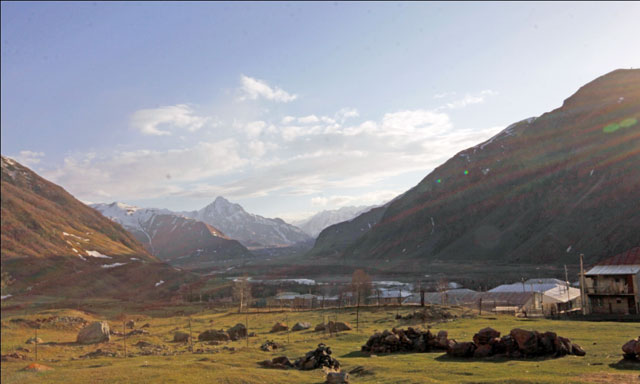
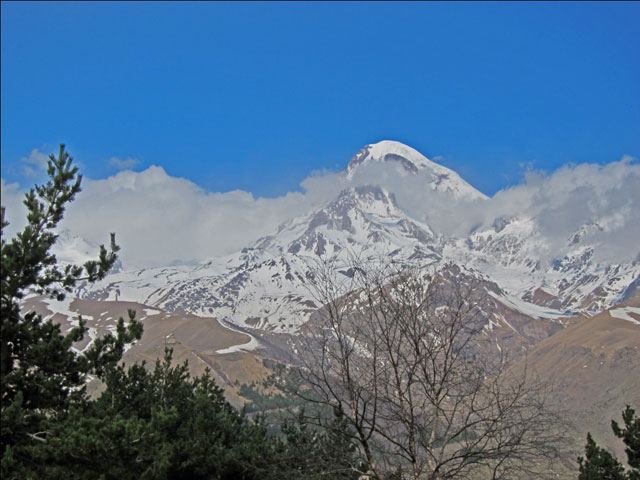
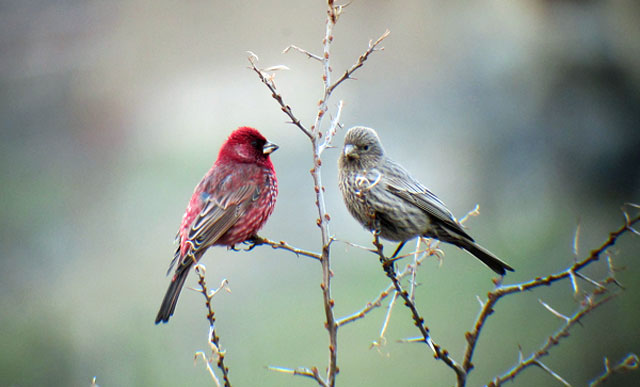
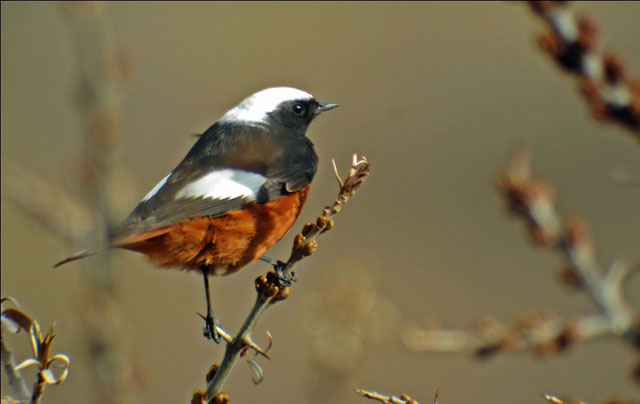
April 20: Jon Dunn on his just-completed Upper Texas Coast tour
This year's Upper Texas trip was one of the smoothest ever with a front at exactly the right time (16 April), just after several days of birding in the piney woods around Jasper and north Houston getting nearly all of the specialties there (Red-cockaded Woodpecker (below), Bachman's Sparrow and territorial Swaison's Warbler and Louisiana Waterthrush). The strong southeast winds had cleared out the woods on the coast, but all of this changed on 16 April with a front that slowly moved through the area with rain and northeast winds. Notable concentrations of migrants on the 16th included 250 Orchard Orioles (below) and 100+ Gray Catbirds (all at Sabine Woods). Warblers were not too numerous, but we did see in the end 28 species including Cerulean and Golden-winged (multiples of each). The rice fields were not under cultivation in most areas due to the drought but we did find over 50 Buff-breasted Sandpipers in one. Our two rail walks produced Yellow Rail on each, including one that came out for excellent viewing when we surrounded it. Excellent views were obtained as well of Le Conte's, Nelson's and Seaside Sparrows at various locations. Rarities included a Long-tailed Duck at Cameron, Louisiana, and a Black-whiskered Vireo, seen well on two days at Sabine Woods. We also had a breeding plumaged Pacific Loon along with 30 Common Loons in Galveston. Our trip list of 216 was higher than average and of course included all the spectacular waterbirds (Roseate Spoonbill below). Nice to report too that the woods on the coast are recovering, especially Sabine Woods which looks much as it did in the past with excellent broad trails throughout. Even the fire ants are back!
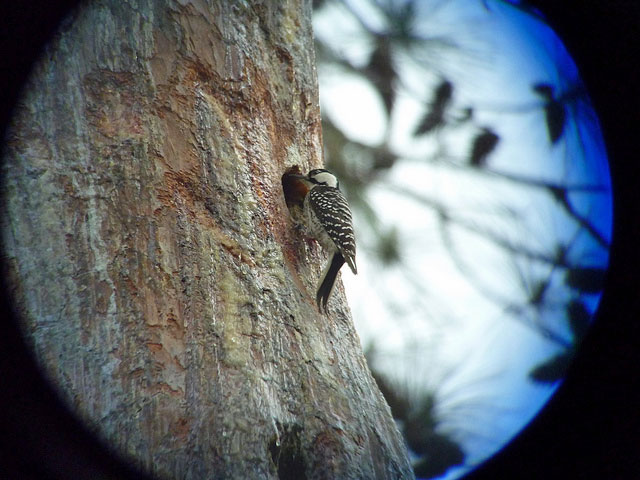
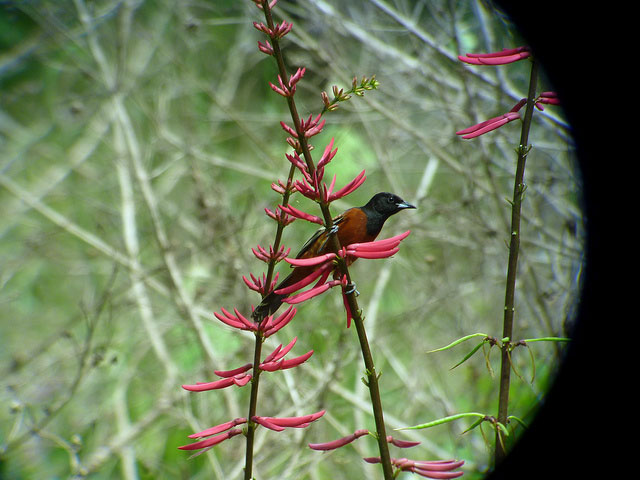
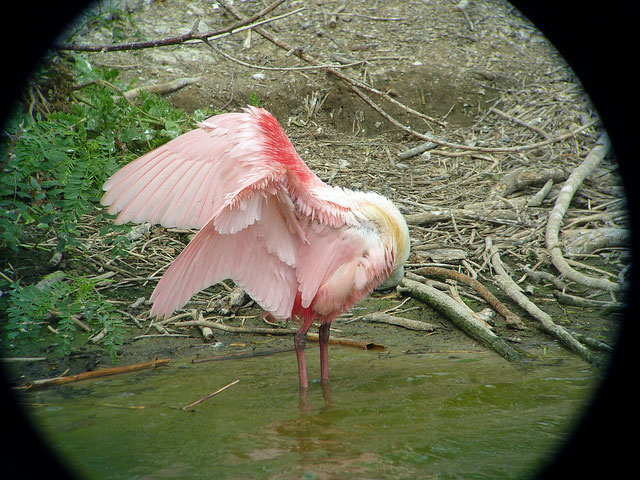
April 19: Paul Holt from his on-going tour to Taiwan
Our tour is going extremely well despite wet weather for the first three days. We've now seen all 24 of the Island's endemics except Taiwan Partridge (which we've heard repeatedly and for which the best site is still to come) and Styan's Bulbul which is easy but for which we're not yet within range.
We've paid attention to endemic subspecies as well including sonorivox Chinese Bamboo Partridge, the nominate subspecies of Vivid Niltava, castaneoventris Varied Tit and formosanus Vinaceus Rosefinch Many of these are likely future splits.
Highlights have included no less than five (four male and one female) Mikado Pheasants (female below) and a pair of Swinhoe's Pheasants (male below) with my best views of both species (after six trips to this gorgeous island), telescope looks at Taiwan Shortwing and Taiwan Hwamei, point blank looks at Alishan Bush Warbler and White-whiskered Laughingthrushes around our feet, and the endemic Yellow Tit and Flamecrest.
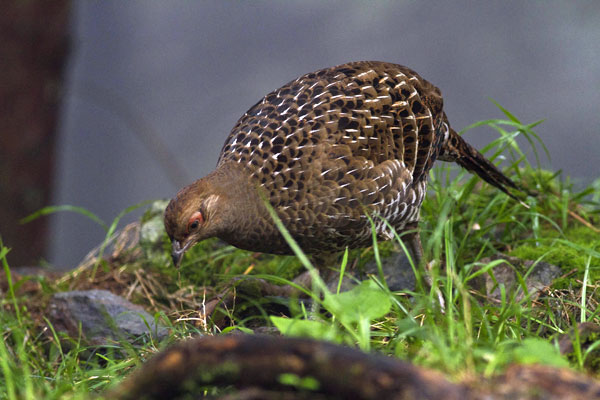
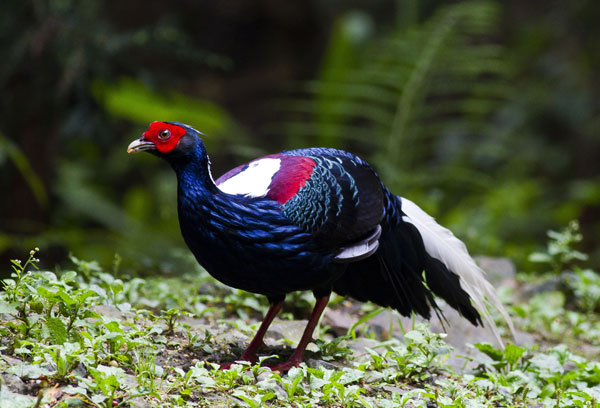
April 19: Jon Feenstra from his on-going tour to Jordan - #2
We spent the last few days in the harsh remoteness of the Arabian deserts of eastern Jordan. We visited the flint desert, the basalt desert and the sand desert. We did well with the sparsely distributed resident birds like Bar-tailed Lark and the sooty race of Desert Lark unique to the deserts of northern Jordan and southern Syria. We also visited the Azraq Reserve - the reserve protecting a patch of the Azraq Oasis, notable for being water surrounded by a vast expanse of desert, a major migrant trap, and a stop on T.E. Lawrence's march north with the army of the Arab Revolt. We picked up Blue-cheeked Bee-eater (below), Eurasian Golden Oriole, Little Crake, Common Cuckoo, multiple Woodchat Shrikes nd Moustached Warbler (below) as they stopped to rest up at the ponds. Today we crossed the country and are now in Aqaba on the Red Sea (below) with tomorrow to see what the winds bring us.
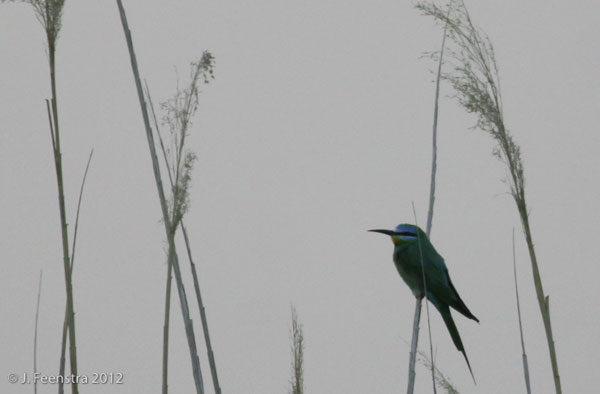
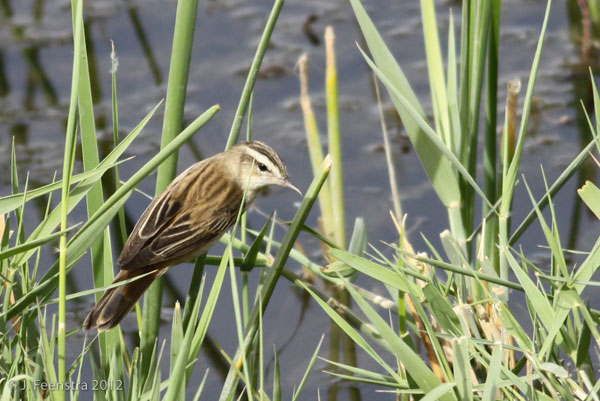
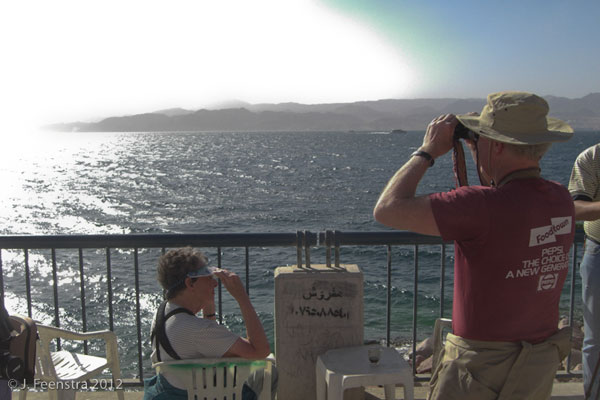
April 17: Gavin Bieber from his just-completed tour of South Texas
I've just returned from a wonderful week tour around South Texas. We traveled the length of the lower Rio Grande Valley from the sandy beaches and migrant traps of South Padre Island to the small border town of San Ygnacio, above Falcon Dam. Along the way, we encountered nearly all of the birds largely limited in the United States to the lower Rio Grande Valley. The generally easy to see birds such as Green Jay (Photo), Plain Chachalaca, White-tipped Dove (photo), Black-crested Titmouse, Altamira Oriole, Golden-fronted Woodpecker, White-tailed, Harris’s and Gray Hawks, Great Kiskadee, Black-bellied Whistling-Duck, Northern Beardless-Tyrannulet, Scissor-tailed Flycatcher, Long-billed Thrasher, Green and Ringed Kingfishers, and Buff-bellied Hummingbird were all thoroughly enjoyed. In addition to these fine species, some of the rarer valley birds were encountered over the course of the week. Our views of a male White-collared Seedeater foraging in short grass were hard to improve upon. The circling low Hook-billed Kite (photo) at Anzalduas (and the pair from the Bensten Hawk Tower), a pair of swimming Muscovy Ducks on the Rio Grande and 8 fly-by Red-billed Pigeons over Salineno were also fantastic. We were even treated to an attractive visitor from Mexico in the form of a young male Crimson-collared Grosbeak that over-wintered in a small yard in Pharr. This tour is always great fun to lead, with a nice mix of specialties and migrants, and I look forward to returning in 2013!

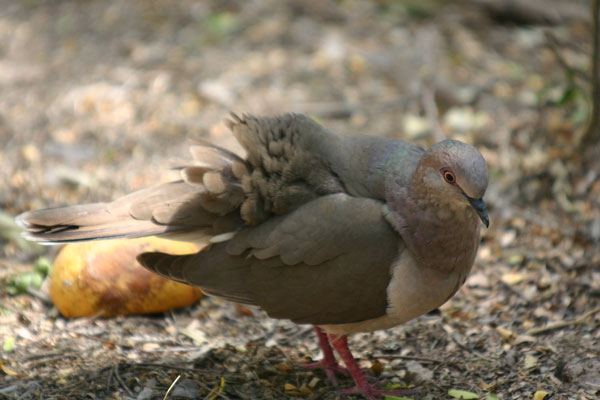
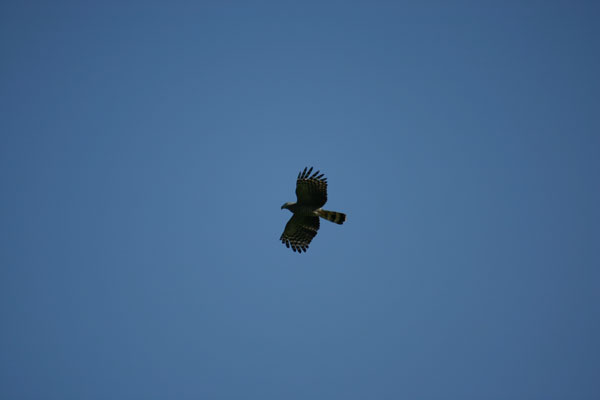
April 13: Jon Feenstra from his on-going Jordan tour
Today was a fine day of birding below sea level - 400 meters below sea level in the Jordan River Valley at the north end of the Dead Sea. We visited a few water catchment dams, thrashed around in a tamarisk-filled wadi (wash), and waded in the Dead Sea (below - where we saw no birds, but had to do it while we were in the neighborhood). Highlights of the day included Purple Heron, Little Green Bee-eater (below), Masked Shrike (below), Long-legged Buzzard, and Palestine Sunbird (below). After two days of birding within an hour of Amman, tomorrow we set off for the eastern deserts with heat, 1200 year old get-away houses of the Umayyads and top-notch Arabian oasis birding.
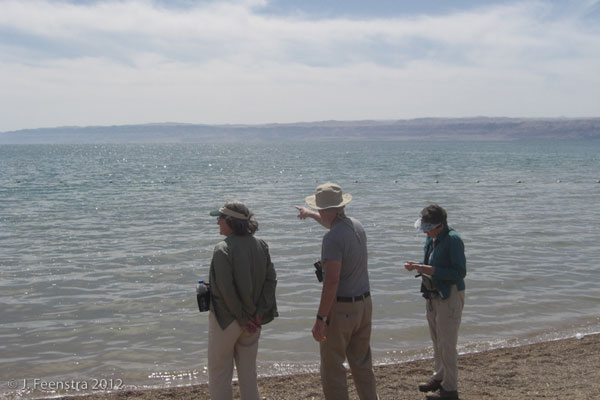
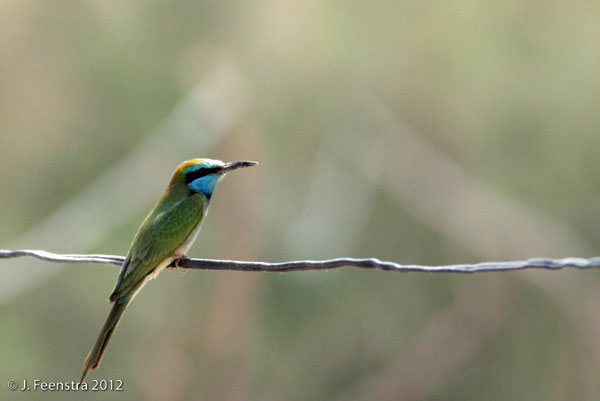
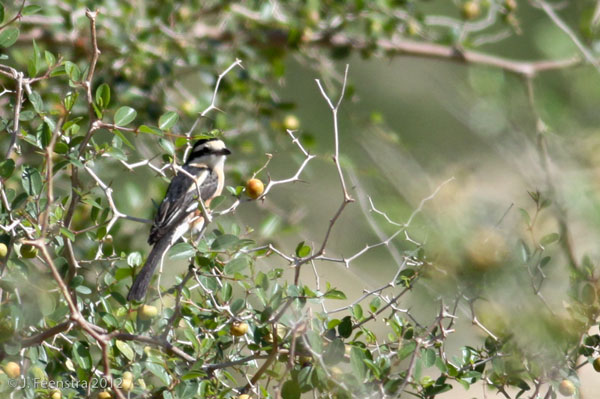
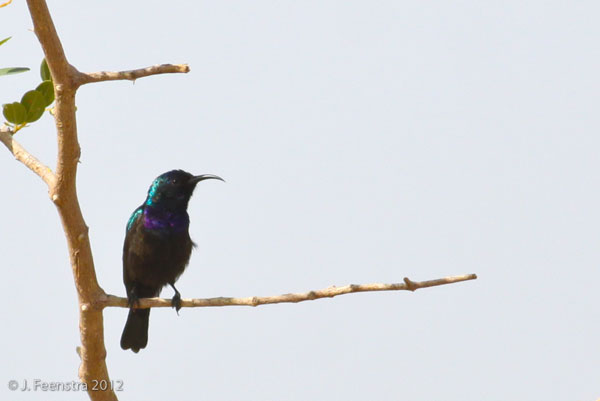
April 8: Gavin Bieber on his just-completed tour of Panama
Just wrapped up a fabulous 11 day trip to Panama. It's hard to pick out favorite birds, and as a group we nominated over a dozen candidate species including everything from Dull-mantled Antbird to Crimson-crested Woodpecker! Some of my favorite highlights from the tour include the brief but excellent views of a Tayra crossing the road near the Caribbean Coast, a very cooperative antswarm which held not only our attention but the attention of three pairs of Ocellated Antbirds! Scope views of a gorgeous Streak-chested Antpitta, a singing Pheasant Cuckoo (below), One-colored Becard and Barred Puffbird on the extension to Burbayar Lodge (which rounded out our list of 5(!) species of Puffbirds for the tour - White-whiskered below), daily sightings of gaudy Keel-billed Toucans and Collared Aracaris (below) and brief views of Bare-crowned Antbirds were also superlative. I've been traveling to Panama for several years now, but every trip still brings surprises, and when judged in combination with the excellent food, short travel times and unique lodgings I can't think of too many other places in Central America that have as much to offer.
